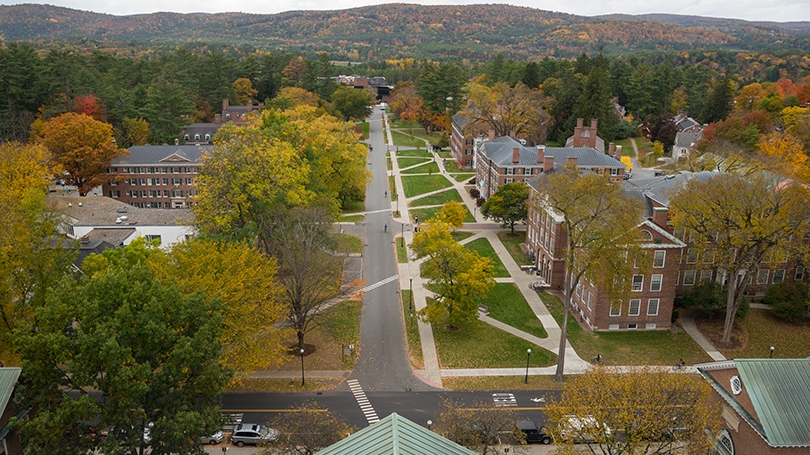
- About
- Departments & Services
- Projects
- Construction in Progress
- Service Requests
- News & Communications
Back to Top Nav
Back to Top Nav
Back to Top Nav
As Dartmouth plans the expansion and improvement of the west end of campus, Hanover Town Meeting voters will go to the polls to decide whether to approve two zoning changes needed for the expansion work.
Voters will also cast ballots on a third zoning change—this one unrelated to the west campus work—that would allow the College to upgrade its Nordic ski facility to meet NCAA standards and to construct other structures associated with outdoor recreation.
The ballot voting for Hanover residents will take place tomorrow, May 10, from 7 a.m. to 7 p.m., at Hanover High School, the day the town holds its annual Town Meeting to decide budgetary matters related to municipal operations and to elect town officials.
“We hope our employees and students who are Hanover residents will vote to support the zoning changes, which will allow the College to provide increased opportunities for research and scholarly collaboration,” says Lisa Hogarty, vice president of campus services. “The changes we anticipate will also result in enhanced pedestrian, cyclist, and vehicular safety on West Wheelock Street and throughout the west end of campus.”
Dartmouth’s plans for the west campus include building expansions at Thayer School of Engineering and the Tuck School of Business; construction of a parking facility under the new Thayer building; safety improvements to the intersection of West Wheelock Street and Thayer Drive; enhancement of outdoor spaces to open the view of the Connecticut River; and connection from the Green through the town-owned Dartmouth Cemetery to the river.
“The changes, now in the planning stages, will create a more vibrant, pedestrian-friendly west campus,” says Hogarty.
The zoning articles, all of which are recommended by the Hanover Planning board, would:
The amendment would also provide a 20-foot rear setback and 10-foot side setback from the GR-2 properties abutting the I district in this area. This setback is the same as that in other portions of the GR-2 district and modifies the current zoning requirement of 75-foot side and rear setbacks where the I district abuts the GR-2 district.
